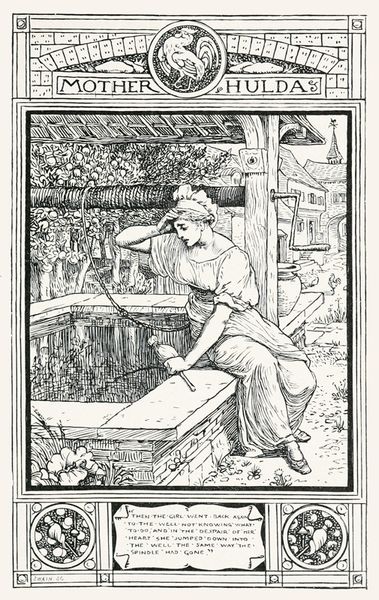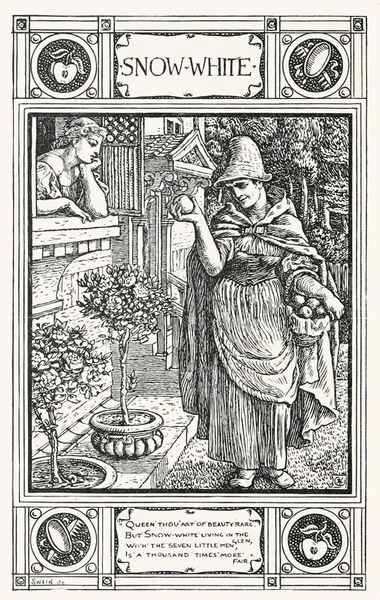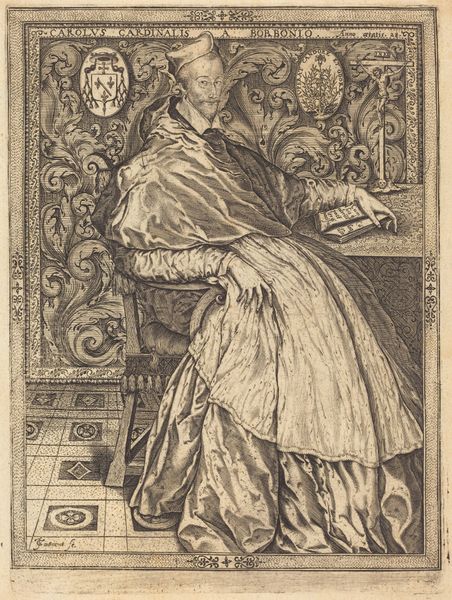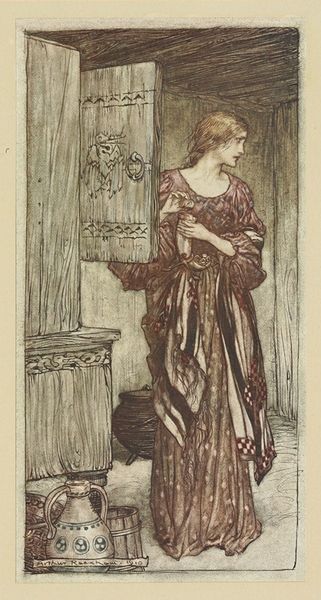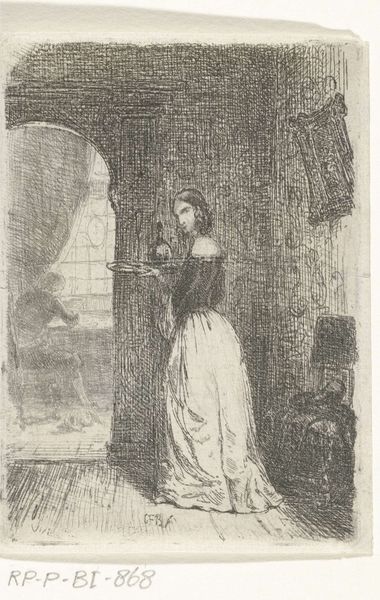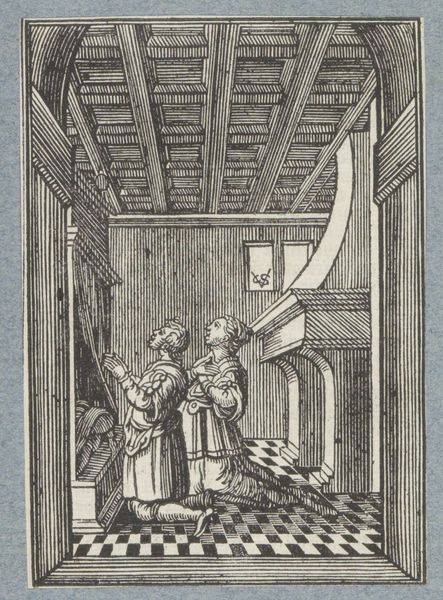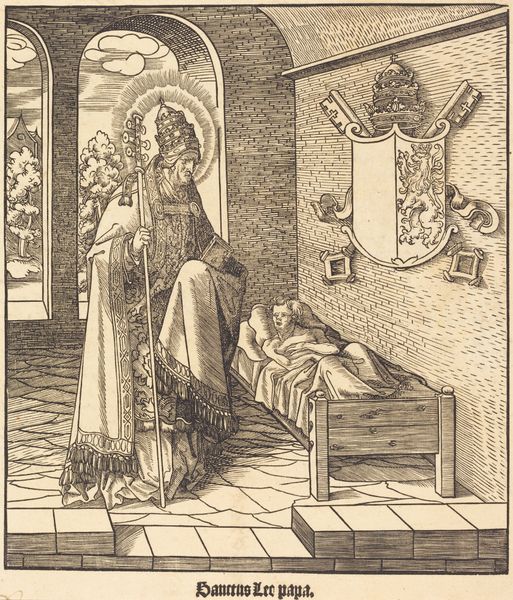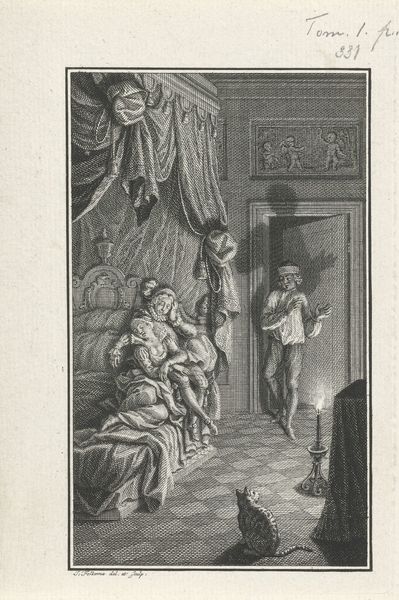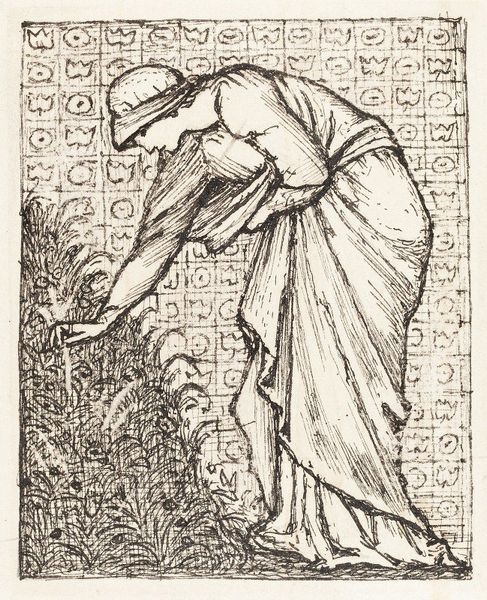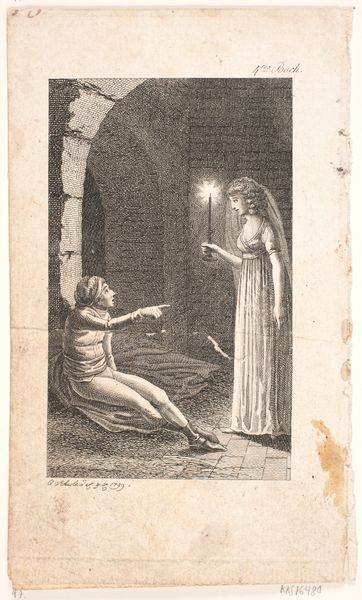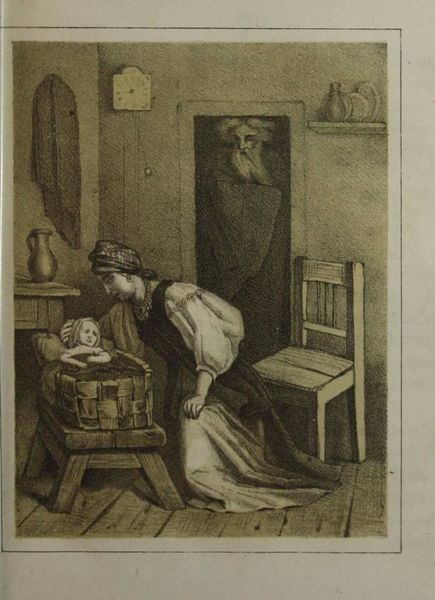
Copyright: Public Domain: Artvee
Curator: Let's consider this striking piece from 1922 by Walter Crane. It's an ink drawing on paper titled "The Robber Bridegroom." Editor: Instantly, there’s this palpable sense of dread, right? The high-contrast linework and the tight composition box you in, like the fairytale itself is closing in. Curator: Exactly! Crane, associated with the Arts and Crafts movement, often drew upon folklore and children’s literature. This image illustrates a gruesome Brothers Grimm tale of a bride lured to a robber's den. We should not forget the era he worked within, steeped as it was in political and industrial tensions which were also reflected in his aesthetic choices. Editor: And you see that aesthetic reinforcing the grim narrative so effectively. It evokes this feeling of being trapped within a patriarchal nightmare, a gothic horror exploring the vulnerabilities of women. I wonder, could Crane be consciously echoing earlier, often more overt critiques on restrictive roles expected of women during the rise of industrial society? Curator: Undeniably, there is something unsettling in how Crane frames the bride – both literally with the illustrated frame that bears the grim warning, and figuratively with her cautious stance and raised arms – almost anticipating something sinister. Crane’s works had a considerable role in socialist art; it's worth considering this narrative within his larger socio-political views. Editor: And there's this incredible symbolism throughout! From the threatening inscription, to the birdcage, hinting at her own potential imprisonment. This image transcends a simple fairy tale illustration. It’s a profound meditation on gendered power dynamics. Curator: Absolutely, it is rich with the symbols he deploys – there are clear statements regarding good versus evil here, yet a certain ambiguity remains. This particular image holds many layers within both artistic expression and narrative exploration that asks important social questions of its viewers even today. Editor: It definitely feels like a crucial piece when mapping visual feminist histories and reflecting upon anxieties of identity. I think seeing this work opens many productive entry points into examining women's narratives and roles in art history more widely.
Comments
No comments
Be the first to comment and join the conversation on the ultimate creative platform.
